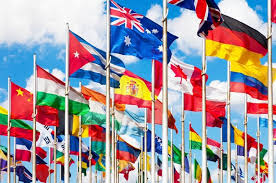The Transformative Power of Arts and Culture in Building Sustainable Cities
The pursuit of sustainable urban development is paramount in our rapidly changing world. This necessitates a comprehensive understanding of arts and culture's crucial role in fostering resilient and vibrant urban ecosystems. Integrating arts and culture into urban planning transcends mere aesthetic considerations; it acts as a catalyst for economic prosperity, social equity, and environmental responsibility. This article analyzes the multifaceted contributions of arts and culture to sustainable city building, drawing on established theories and models from urban planning, sociology, and economics. Key concepts explored include sustainable urban design, social capital theory, creative industries economics, ecological footprint analysis, constructivist learning theories, urban regeneration principles, destination branding strategies, cultural diplomacy frameworks, and the concept of adaptive capacity.
Economic and Social Impacts of Cultural Vibrancy
The arts and culture sector functions as a significant economic driver, a principle well-established within creative industries economics. Cultural institutions such as museums and theaters attract tourists, generating substantial revenue through cultural tourism and stimulating local economies. Input-output analysis reveals a multiplier effect, whereby initial cultural spending ripples through the local economy, supporting numerous businesses and creating diverse employment opportunities. Furthermore, social capital theory underscores the vital role of arts and culture in fostering social cohesion. Shared cultural experiences and events build strong social networks, strengthening community bonds and promoting a sense of belonging among diverse populations. This fosters place attachment, a strong connection between individuals and their local environment, bolstering social stability and resilience.
Environmental Stewardship and Educational Enrichment
Integrating arts and culture into urban planning significantly contributes to environmental sustainability. Applying principles of sustainable urban design, public art installations can effectively raise awareness of environmental issues and promote eco-conscious behaviors. Moreover, cultural initiatives can transform underutilized urban spaces into green areas or community gardens, improving urban biodiversity and reducing carbon footprints. This aligns with the ecological footprint concept, minimizing the negative environmental impact of urban development. Concurrently, arts education is critical for cultivating creativity, critical thinking, and problem-solving skills, aligned with constructivist learning theories. Investing in robust arts programs empowers citizens, particularly youth, with essential skills for sustainable urban development and civic engagement.
Urban Revitalization and Global Cultural Exchange
Creative placemaking leverages the transformative power of arts and culture to revitalize neglected urban areas, a key tenet of urban regeneration strategies. Street art projects and repurposed buildings can revitalize communities, attracting residents and visitors, and increasing property values. Applying principles of destination branding, investment in arts and culture enhances a city's global image, attracting tourists and fostering significant economic benefits. Cultural diplomacy theory highlights the role of arts and culture in fostering cross-cultural understanding and international collaboration. Cultural exchanges and partnerships promote mutual respect, break down barriers, and contribute to a more interconnected and peaceful global community.
Building Resilient and Innovative Cities
Arts and culture contribute significantly to building resilient and adaptable cities. Traditional knowledge embedded within cultural practices often offers valuable insights into sustainable resource management. Integrating these practices into urban planning enables cities to learn from the past and develop innovative strategies for a sustainable future. This aligns with the concept of adaptive capacity, enhancing the city's ability to respond effectively to future challenges. Moreover, the creative sector serves as a hub for social innovation, with artists and entrepreneurs developing creative solutions to environmental and social problems. Supporting this sector unlocks a wealth of innovative ideas that drive social change and contribute to achieving sustainable development goals. Investing in arts and culture creates a lasting legacy for future generations, ensuring the long-term well-being and prosperity of urban communities.
Conclusion and Recommendations
In conclusion, integrating arts and culture into urban development offers substantial benefits across economic, social, environmental, and global dimensions. A holistic approach, incorporating principles from diverse fields, is crucial to maximizing the transformative potential of arts and culture. Future research should focus on developing sophisticated quantitative models to more precisely measure the economic and social impacts of arts and culture initiatives. Further investigation into the mechanisms through which arts-based interventions contribute to increased urban resilience is also warranted. This multidisciplinary approach will refine strategies for integrating arts and culture into urban planning, ultimately creating sustainable and vibrant cities capable of thriving in the 21st century and beyond. This involves developing robust policy frameworks that support both the arts and culture sector and their integration into urban planning processes. A key recommendation is to incentivize collaboration between urban planners, cultural organizations, and community stakeholders to foster equitable access to arts and culture initiatives, ensuring meaningful community participation and ownership.
Reader Pool: Considering the significant role of arts and culture in sustainable urban development, how can we effectively evaluate the long-term impact of arts-based interventions on community well-being and environmental sustainability?





No comments yet. Be the first to share your thoughts!